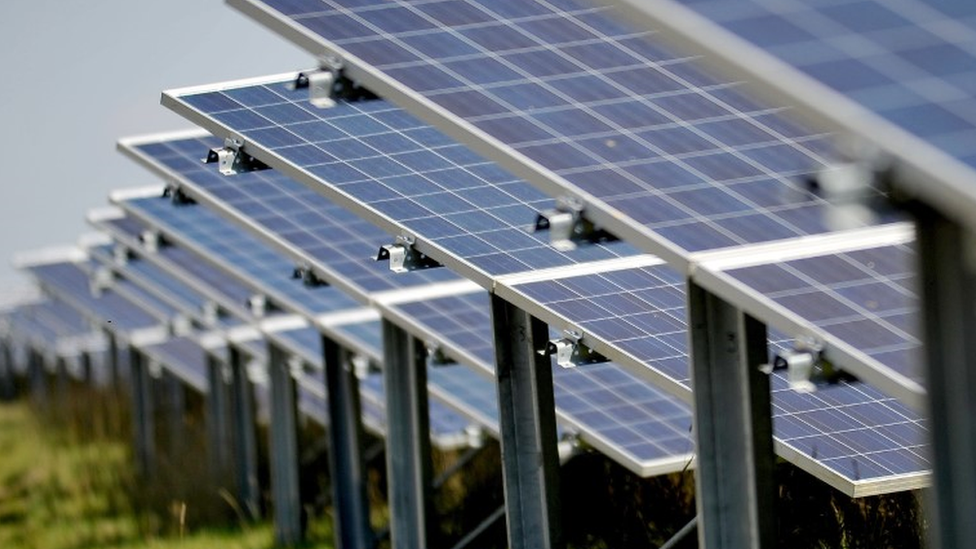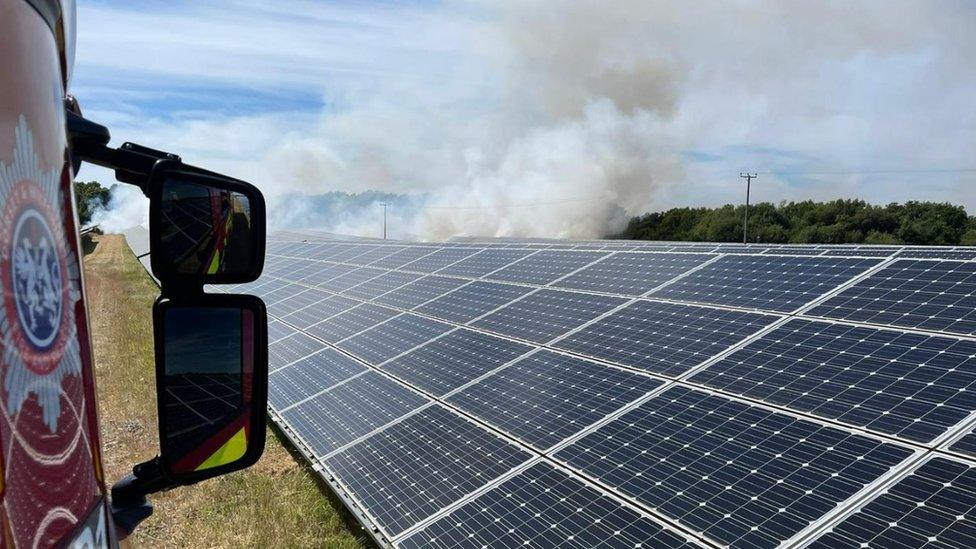Wimborne solar farm plans set to be submitted
- Published

Plans for the site at Horton, near Wimborne are yet to be formally submitted but could generate electricity for 40 years
A 16 hectare (39.5 acre) solar farm is being proposed for a site close to an area of outstanding natural beauty.
The 49 megawatt site at Horton near Wimborne, Dorset could supply electricity for the next 40 years.
The North Farm plan is yet to be formally submitted, but Dorset Council says three already exist in the area.
As of March 2022, the council was in the top 15% of over 400 UK local authority areas for renewable electricity generation.
Woodlands Mannington Solar Ltd has been told by the government the farm would likely have "significant environmental effects" on the nearby Cranborne Chase Area of Outstanding Natural Beauty (AONB).
'Changes the character'
The company claims this can be mitigated by adequate screening, according to the Local Democracy Reporting Service (LDRS).
The council said: "Although there may not be inter-visibility between these developments, the relatively close proximity of such industrial installations changes the character of the countryside, which is typically characterised by widely spread small settlements and farmsteads."
Dorset Council said the greatest disturbance would most likely be during construction, which is expected would last 28 weeks.

The proposed site for the 16 hectare (39.5 acre) solar farm is marked in red and close to the Cranborne Chase AONB
The site is on mixed farmland between the Remedy Oak golf course and Horton Road. The area also has several Sites of Special Scientific Interest and listed or historic properties in the vicinity, LDRS reported.
A series of public footpaths cross the proposed site and pass alongside it.
The council's AONB team expressed concerns about the principle of such a large scale development.
'Strong track record'
In a statement it said: "The special characteristics of the AONB, such as tranquillity, remoteness and the undeveloped rural character, may be compromised by the presence of a large scale development which is not considered typical of a countryside location."
Dorset Council said it had a "strong track record" in securing well planned schemes for renewable electricity generation in "often sensitive locations".
It added: "This has aided an increase of 250% in renewable energy generation between 2014 and 2020."
In 2020, Dorset generated enough electricity to supply over 110,000 average sized households for a year, the council's website claims.

Follow BBC South on Facebook, external, Twitter, external, or Instagram, external. Send your story ideas to south.newsonline@bbc.co.uk, external.
Related topics
- Published23 November 2021

- Published12 July 2022

- Published8 August 2022
